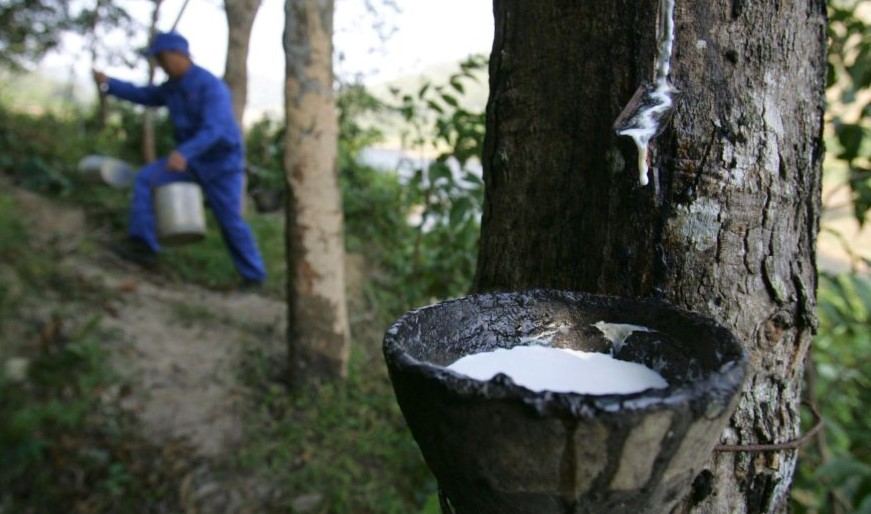European Union Deforestation Rules
OpenLife Nigeria reports that European Union deforestation rules have sent shivers into the spins of Cambodia’s over 30,000 small farmers to major exporters in Thailand and Malaysia in Southeast Asia.
The European Union rules which are aimed at stopping deforestation have organically threatened widespread disruption for Southeast Asia’s rubber sector.
This is coming as the EU’s deforestation regulation (EUDR) aims to ban imports of seven commodities — cattle, cocoa, coffee, palm oil, rubber, soy and wood items — if they come from land that was deforested after December 31, 2020.
Companies dealing in such imports will have to provide “conclusive and verifiable information” mapping their supply chains, including geolocation data for where products were grown, to ensure products are compliant. Compliance will become mandatory in December 2024 for larger companies and in June 2025 for smaller ones.
The concern for Southeast Asia, critics say, is that these requirements will disproportionately hurt small farmers while failing to adequately address rubber’s role in deforestation.
Jean-Christophe Diepart, a geo-agronomist based in Cambodia, said there will be “profound implications” for the country’s farmers.
“The risk is that basically the smallholders will be dropped because there are too many requirements and it’s too much effort to monitor and trace the rubber they will produce,” Depart said. That would just leave “large corporations who have the resources to comply.”
Similar concerns are growing in Malaysia. The country joined Indonesia to negotiate with the EU over the deforestation rules, as the two are concerned about the impact on their palm oil industries. But Malaysia’s $2 billion rubber export industry also stands to be affected.
The country ships about 17% of its rubber products to the EU, its biggest market after the U.S. Some 93% of the land planted with rubber in the country is controlled by smallholder farmers, according to the Malaysian Rubber Board.
In March, Malaysia’s rubber farmers joined with palm oil growers to file a petition to the EU protesting the “unilateral and unrealistic” demands stipulated in the EUDR, saying the rules will exclude smallholders from the European market and worsen rural poverty.
Thailand, the world’s biggest rubber producer and exporter, is attempting to get out ahead of the new rules. Regulators there have set up a national platform to help the country’s more than 5 million farmers meet the impending traceability requirements.
Nakorn Tangavirapat, an official with the Rubber Authority of Thailand, said the system will collate information on all actors in the supply chain and about 95% of industry players had already registered.
As the region braces for the EUDR to come into effect, perhaps Cambodia best exemplifies the complexity of crafting and enforcing such trade rules — an irony considering the country ships little if any rubber to Europe.
The majority of its natural rubber goes to Vietnam, mostly in an unprocessed form known as coagulum. This largely informal trade is facilitated by middlemen who often pay cash on the spot and keep the price above that offered by local processing factories in Cambodia.
Discrepancies in the countries’ records hint at the scale of this trade. Cambodia reported it sent $289 million worth of rubber to Vietnam in 2021, but Vietnam recorded importing $1.5 billion worth of Cambodian rubber, according to the U.N. Comtrade database.
This arrangement leaves Cambodia’s local processors with a shortage of fresh latex to process into higher-value items, causing “substantial” economic losses in terms of value added and job creation, according to Diepart.
For Vietnam, a major rubber exporter to the EU, it presents a major compliance problem, according to research by Forest Trends. Once in Vietnam, rubber from Cambodia, as well as Laos, is mixed in with local rubber, making traceability “almost impossible,” according to the group.
To clean up their own supply chain, Vietnamese traders with links to Europe will likely have to reduce imports from Cambodia, said Phuc Xuan To, a senior policy analyst at Forest Trends.
Due diligence required by the EUDR includes a risk assessment with 14 criteria, including the prevalence of deforestation in the country, the impact on Indigenous communities, the presence of corruption and the level of law enforcement.
“In theory the [Cambodian] government could provide traders with information, but in reality, can you get it? There’s no way,” Phuc said.
Diepart raised a similar point, saying that with remote sensing his group identified 1.1 million hectares of rubber within a study area of 5.5 million hectares where the government puts the rubber total at around 445,000 hectares.
“Even the very basic information about how many hectares of rubber there is in Cambodia is not accurate at all,” he said. “Starting from this … vague basis, how can the traceability of the entire value chain be made?”
Cambodia’s Ministry of Agriculture did not return a request for comment before publication.
EU policymakers, Phuc added, appear not to have considered smallholders trading across borders in cash in places like Cambodia and Laos when crafting their rules.

“Cross-border trade has not been factored into EUDR,” he said. “With countries importing timber or rubber or coffee from other countries and then exporting to Europe, cross-border trade is very important to take into account, but I don’t think the EU is thinking about that yet. It’s another level of complexity.”
Another criticism of the EUDR is that it comes too late to undo the environmental damage caused by the rubber boom, which ended with a price crash a decade ago.
In Cambodia, Diepart said, rubber was the major driver of deforestation until around 2012 or 2013. Now, he said, the main driver is cashews. Rubber plantations that cleared forest before December 2020 would not be barred under the EUDR as long as their business complies with local laws.
Perhaps the most pressing concerns for producers across the region, large and small, is who will pay for the added cost of compliance.
Men Sopheak, head of the association for rubber development of Cambodia, who runs a 13,000-hectare plantation, said producers are already under huge financial strain as production costs rise but rubber prices stagnate due to a glut caused by rubber trees that were planted before the boom coming on line.
“The rubber industry is not expanding anymore,” he said. “Due to the low price, they convert from rubber to other crops that are more profitable and less labor-intensive.”
Sopheak said he was hopeful, however, that tougher sustainability requirements would become an impetus to boost local processing and manufacturing of rubber products. Cambodia has two car tire factories and three more planned. Sopheak said the manufacturers currently import rubber but the association is working to promote local products.
Producers in Thailand are also grappling with increased costs as sustainability becomes a more of a concern for buyers and a legal requirement in more jurisdictions.
Thai Rubber Latex Group Chairman Vorathep Wongsasuthikul said building a system to allow customers to trace their products’ provenance would push production costs up by 10%.
Veerasith Sinchareonkul, managing director and executive director of Sri Trang Agro-Industry, said the industry will have to work with authorities to adapt.
“We think this trend is unlikely to happen only in Europe, but it will be a new sustainable trend that will be adopted around the world eventually, and that’s why we need to develop ourselves to match this megatrend,” Veerasith said.

Outside headline, contents Nikkei






